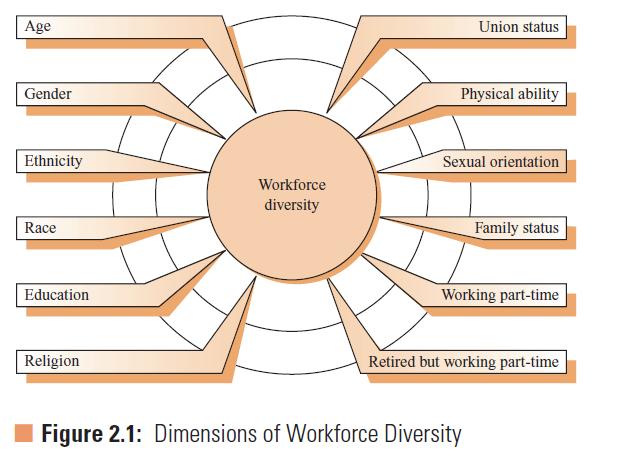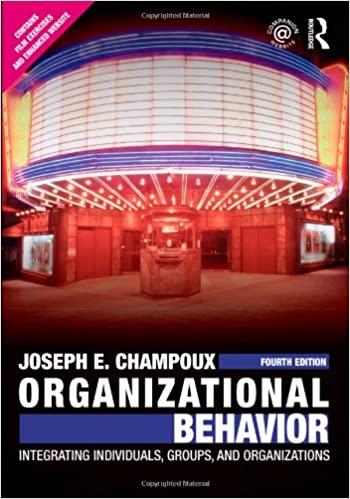Discuss the predicted future changes in the composition of the U.S. workforce. Compare that workforce profile to
Question:
Discuss the predicted future changes in the composition of the U.S. workforce. Compare that workforce profile to your work experiences. What issues have you or will you face in a highly diverse organization?
WORKFORCE DIVERSITY
Workforce diversity refers to variations in workforce composition based onpersonal and background factors of employees or potential employees. Thedimensions of workforce diversity include age, gender, ethnicity, physical andmental ability, sexual orientation, religion, and cultural beliefs. Other dimensionsare family status, such as a single parent, a dual-career relationship, or a personwith responsibilities for aging parents. A quick look at Figure 2.1 shows youthe complexity and scope of the issues surrounding this topic.
The Bureau of Labor Statistics’ (BLS) projections of the U.S. civilian laborforce growth between 2006 and 2016 show many changes. Those projections show civilian labor force growth of 0.8 percent during the period of 2006 to 2016. The number of women in the labor force should grow by 8.9 percent; projected growth for men is 8 percent. Labor force projections by age show a large increase in those 55 and over (46.7 percent) anda decrease for those in the 16 to 24bracket (–0.7 percent). The race/ethnicprojections show a small increase inwhite workers (5.5 percent). Most of theprojected increase in the labor force by2016 will come from minority workersIf the BLS projections hold true, thefuture workforce will have more femaleand minority workers. Age diversitywill also continue, with 22.7 percent ofthe labor force at age 55 or over in2016. The expected labor force genderand ethnic profile in the year 2016 is46.6 percent women and 35.4 percentnon-white workers.
BLS projections out to 2050 show further changes. Workers age 55 or overshould make up 22.9 percent of the workforce, and non-white workers shouldmake up 48.6 percent of the workforce. The projections for women in the 2050workforce stay at 48 percent.
Regional variations also will be significant. The projections discussed so farwere for the entire civilian labor force. Local population characteristics will affectthe workforce from which a specific organization draws.
People from different social backgrounds, cultures, and language groups bringdifferent worldviews to an organization. They view work issues and problemsthrough different perceptual lenses. If properly managed, these different viewspresent opportunities to organizations, but they also increase conflict potential. The challenge for managers is to focus those diverse views on the mission of theorganization while managing conflict to keep it at a functional level.
People with different needs and expectations also present challenges toan organization’s human resource policies. Working parents often requireadaptations in work schedules or on-site day care. Single parents might needtime off to take a sick child to a physician. Native Americans often need specialwork schedules during their culture’s celebration periods. A disabled personcould require special access to a building and a specially designed work area.Part-time workers might need to arrange job sharing so that the organizationcan get the value of their talents.
Step by Step Answer:

Organizational Behavior Integrating Individuals Groups And Organizations
ISBN: 9780415804646
4th Edition
Authors: Joseph E. Champoux





